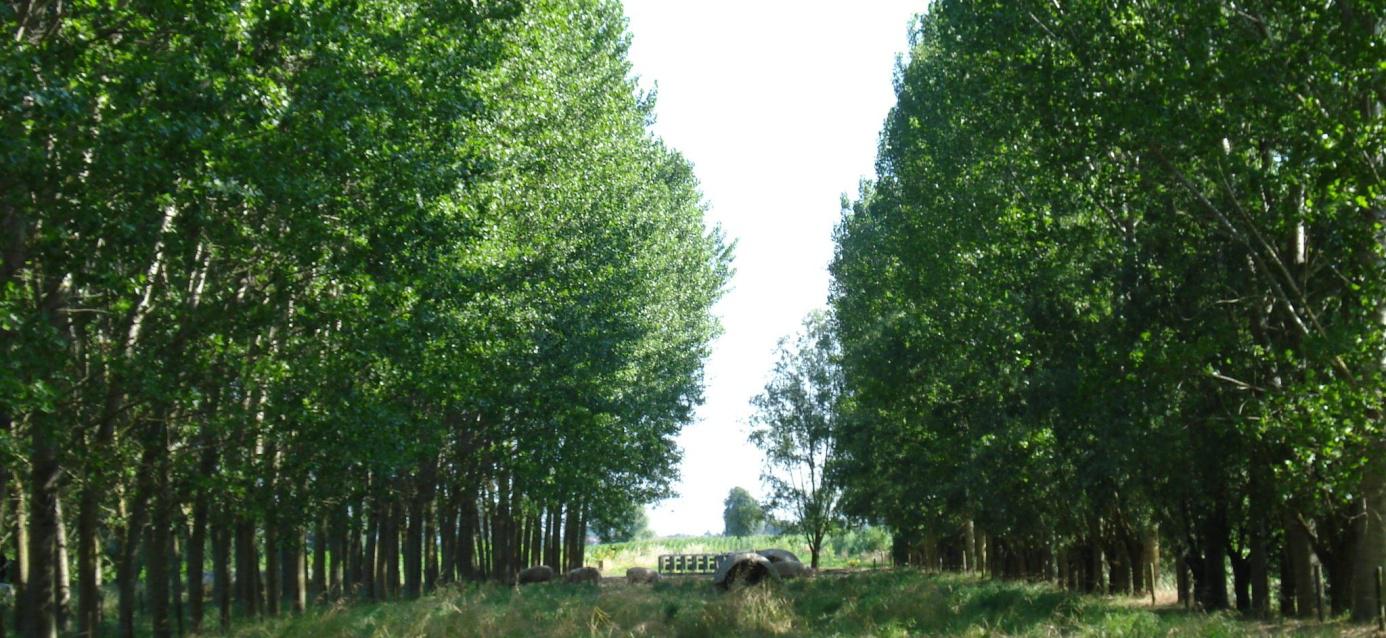
Free-range Pigs with Energy Crops, Italy
Description of system
Some farmers in the Veneto region of Italy have integrated trees with their free-range pig systems. Some systems are organic; some are conventional. A key driver for the integration is to provide shade for the pigs as the unshaded summer temperature can often reach 32-35 °C. Such high temperatures are understood to lead to increased risk of abortion in pregnant sows, sunburn, and a reduced number of piglets per litter.
The stakeholder workshop took place at the ‘Sasse-Rami’ Veneto Agricoltura Experimental Farm in the southern part of the Veneto region in north east Italy. Within a 20 ha experimental organic area on the farm, there is an area used for free-range pigs (5 ha) and an area of poplar and willow (10 ha). The first harvest of ten-year-old poplars in February 2014 provided a reasonably good quantity and quality of wood both for biomass and the production of pallets.
Initial stakeholder meeting
Positive aspects of the agroforestry system were seen to be the diversity of products, improved product quality and animal health and welfare. Negative issues included tree survival. Possible areas for research include appropriate protection for young trees, the health benefits and risk of free-range agroforestry systems in an area where there are wild boar, and the potential to capture the perceived welfare benefits of agroforestry systems with increased product values.
If you would like to know about the activity of this group, please contact Dr Valerio Bondesan; valerio.bondesan@venetoagricoltura.org
Download the initial stakeholder report
Download the initial research and development protocol
An initial research and development protocol was produced in March 2015.
Download the system description
A system description report providing an update on the research with the free-range pigs and energy crops was produced in December 2015.
Lessons learnt
In September 2017, Valerio Bondesan and colleagues in the Veneto Region of Italy summarised the lessons learnt from their research on using poplar trees in free-range production. After 3-4 years of growth, the shade from the poplar trees provided welfare benefits for the pigs. However, with temperatures still in excess of 33°C for part of the season, the pigs still need access to water puddles and mud to reduce heat stress. The poplar trees also need protection and a 70-80 cm wire cage was the most effective of the four methods tested.
The group also completed research amongst 387 consumers to determine their perceptions of agroforestry and agroforestry pig products (Bondesan et al. 2016). Approximately a third of those interviewed indicated that there were willing to pay an addition 10-15% because of the welfare and environmental benefits of agroforestry.
The report on consumer perceptions
Bondesan V, Sartori A, Ricardi F, Burgess PJ (2016). Consumer perceptions and behaviours regarding traditional pork products from agroforestry pigs in Veneto region (north-east Italy). 12thEuropean IFSA Symposium, Harper Adams University (UK)